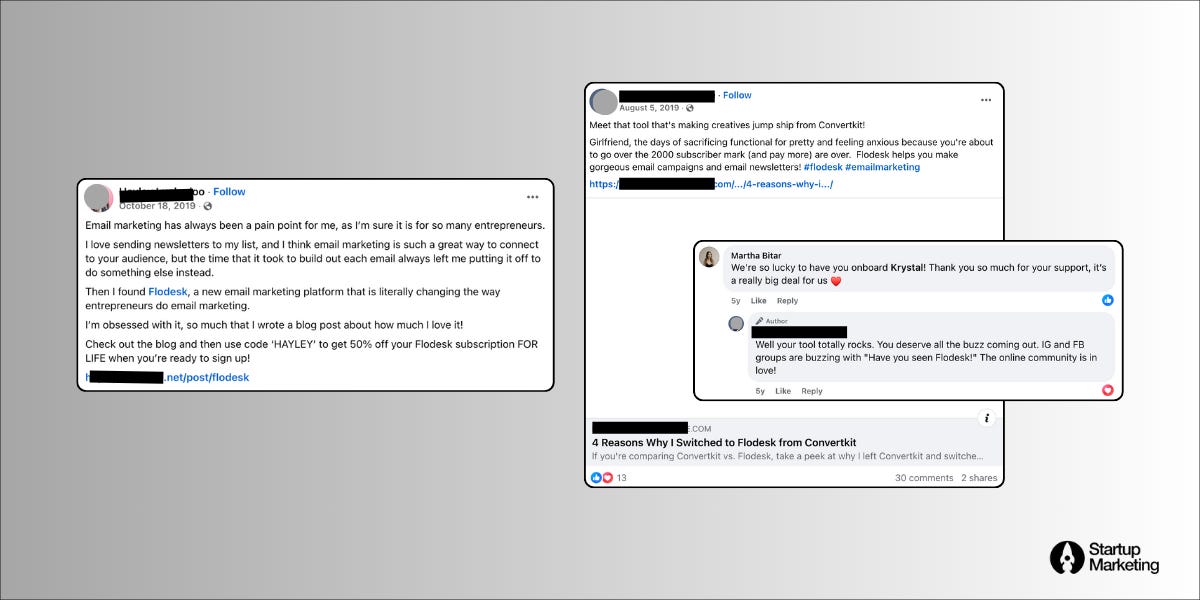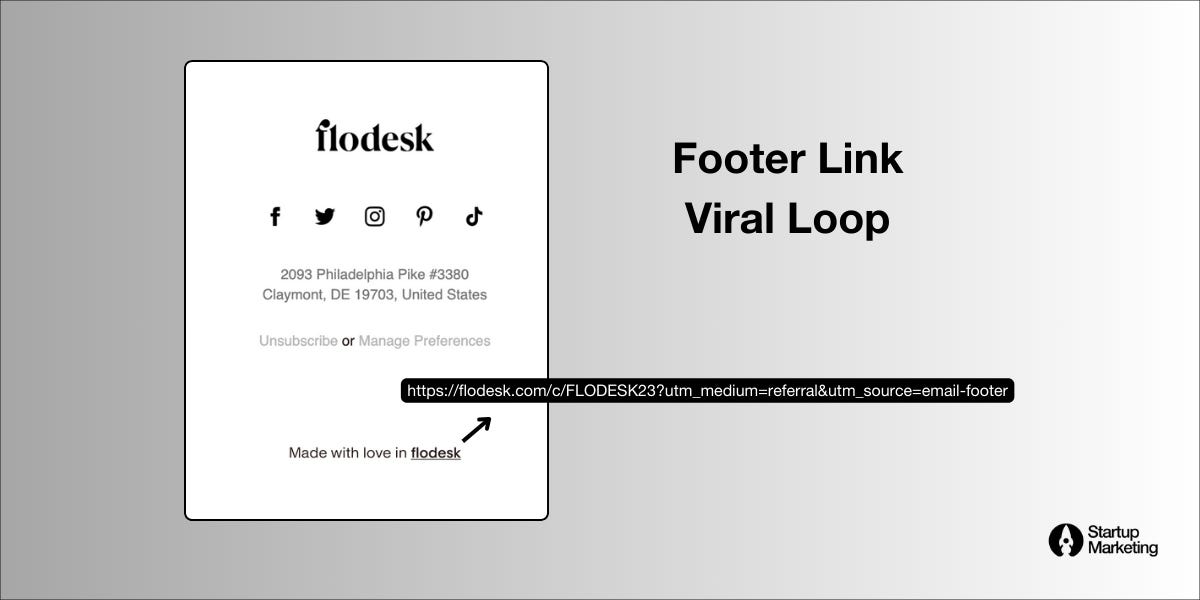Flodesk’s $0 to $1 Million ARR Marketing Strategy
A deep-dive into Flodesk's marketing tactics that helped them grow to $1M ARR in 5 months.
👋 Hey, it’s Elan. Welcome to my weekly newsletter, where I break down how SaaS startups grew from $0 to $1 million in ARR. I specifically focus on their marketing strategies - where they started, what worked, and what didn’t.
This week I’m covering how Flodesk grew from $0 to $1 million in ARR with 5,000 paying customers in just 4 months after its initial launch.
About Flodesk
Flodesk is an email marketing platform for small businesses. It launched in August 2019 and hit its first $1 million in December 2019. Its current revenue is $27 million, and Flodesk is entirely bootstrapped. They offer a simple pricing plan at $38/month with no limitations.
What do they do?
They make emails beautiful. Yes, literally. Take a look for yourself here.
I love startup growth stories, especially bootstrapped ones, because resource and time constraints push them to think and act in unconventional ways. Flodesk’s story is no exception.
Flodesk’s Marketing Strategy
They grew to 500 paying customers without even having a landing page. Can you believe that? It’s true. As I mentioned, bootstrapped companies often do things that are typically uncommon or even unaccepted in normal situations.
For Flodesk, three key growth initiatives worked, and together, they created an autopilot flywheel.
Beta users from Facebook communities – Their first paying customers were beta users acquired through Facebook groups.
Built-in virality from email marketing – Since Flodesk is an email platform, every email sent by a customer introduced Flodesk to their entire audience - just like Hotmail’s legendary growth hack.
A strong referral program – Customers got $19 for every new user they referred, giving them a reason to share Flodesk.
Community Outreach
When Flodesk developed its initial prototype, co-founder Martha Bitar began reaching out to small business communities on Facebook. She simply shared what Flodesk offered and invited beta users to try it.
At the time, most email platforms (like Mailchimp) focused on bulk email delivery, not design. Flodesk solved a real pain point - creating visually appealing emails. So there was an overwhelming response from the small business owner community to try out the product. Flodesk onboarded 30+ beta users and aggressively iterated the product in real-time based on the user feedback.
Those beta users not just converted as paying customers but became Flodesk evangelists as they found a product they were desperately looking for.
What made beta users to stick around?
They felt valued and invested – Since the product improved based on their feedback, they naturally felt part of something bigger.
They loved their emails – Users wanted to showcase their beautifully designed emails, which helped them grow their own audience.
Viral Loop
Email and messaging platforms have built-in virality - but only if users love the product enough to share it. Flodesk nailed this.
How? They added a small footer at the bottom of every email:
“Made with love in Flodesk”.
The impact?
For example, one of their first customers, Natalie, sent her first email to her 16K subscribers. Just to speculate the impact, here is a sample math,
Even if 5% clicked the footer, that’s 800 new visitors.
and if 10% signed up, that’s 80 new users - from just one email.
Now, imagine each of those 80 users sending out emails with the same footer. Boom - exponential growth.
And this didn’t just apply to paying customers - even free trial users unknowingly spread Flodesk while exploring the product.
Affiliate Program
Since early users loved the product, they naturally wanted to refer it. In fact, many asked for referral codes - so Flodesk gave them one.
They launched a referral program where customers earned $19 per sale made through their unique referral link.
Why did this work?
Great product – Users genuinely loved Flodesk.
Strong incentive – Earning money for sharing something they already loved.
Built-in reach engine – Their customers already had email lists, creating an automated reach engine.
Two smart tweaks made this program even more powerful:
They linked the email footer to each customer’s referral code, so users didn’t have to do anything - just opt in.
Referral opt-in was built into the onboarding process, making it effortless for new users to join.
And every time someone made a sale, they got a notification about their earnings - which motivated them to refer even more.
Flodesk’s Growth Flywheel
Conclusion
In hindsight, this might seem simple and straightforward, but I don’t think Flodesk planned it from day one. They succeeded because they were situation-aware, spotted opportunities, and acted fast.
One big lesson: Don’t blindly follow some growth playbook. Understand your product and target customers, identify a leverage, and build a tailored approach to reach your potential customers at scale.
Plus, always look for potential viral loops in your product.







